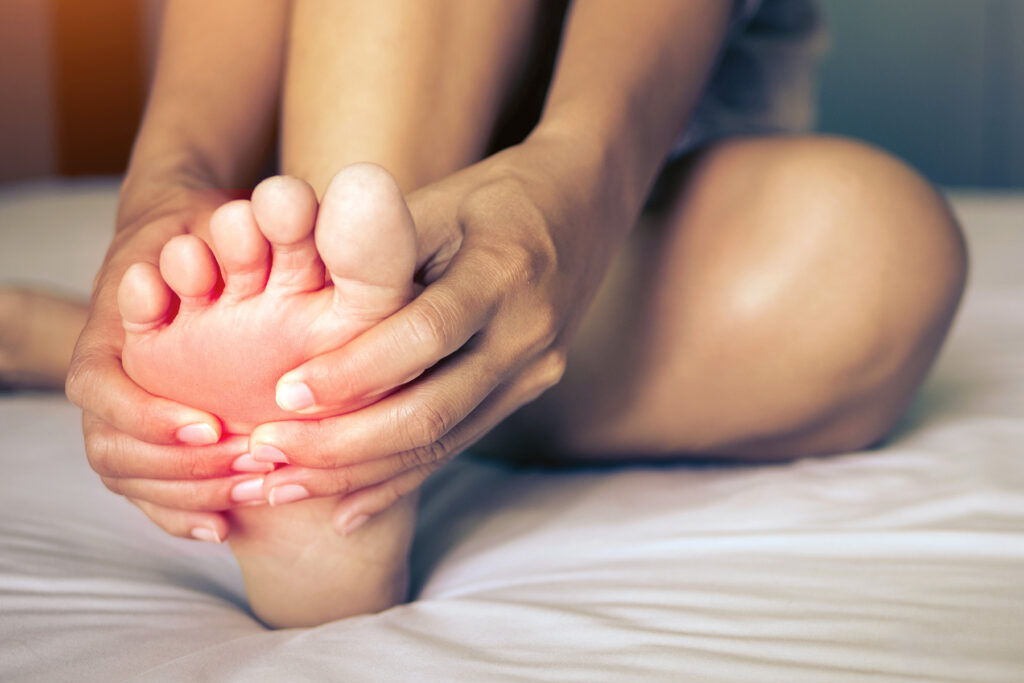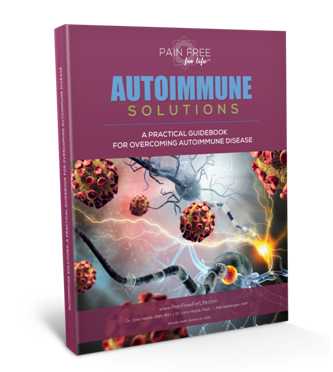
Living with diabetes is emotional, painful, stressful, and can lead to depression, neuropathy, and in extreme cases, amputation, if not effectively managed.
If you or a loved one has been diagnosed with type 1 diabetes, you understand all too well how difficult this disease can be to live with. When we meet with diabetes patients, they often express to us that they fear they will never live a healthy life again. With over 30.3 million people in the United States alone suffering from some form of diabetes, the wide-ranging effects this disease has on our society can not be underestimated.
We are here to tell you that a type 1 diabetes diagnosis doesn’t have to spell out the end of your life as you know it. There are natural and safe treatment options that have helped even our worst type 1 diabetes patients find a better quality of life and avoid drastic surgeries.
Conventional type 1 diabetes treatment is focused on managing blood sugar levels with the use of insulin injections and lifestyle changes that include diet and increased exercise. In this blog, we will address how ultra-low microcurrent can manage diabetes symptoms, allowing you to live the life you love.
What is Type 1 Diabetes?
Type 1 diabetes is a chronic condition in which your pancreas produces little to no insulin. Insulin is an essential hormone that your body requires to allow sugar, or glucose, to enter cells and produce energy.
Typically occurring in childhood, type 1 diabetes is caused by several factors like genetics and some viruses. Though diabetes is heavily researched, scientists and doctors haven’t found a cure for this chronic disease, leaving many patients with a feeling of hopelessness.
Type 1 Diabetes Symptoms
As we previously mentioned, type 1 diabetes is typically diagnosed in childhood, but it’s important to note that it can suddenly develop in adults as well.
Signs of type 1 diabetes:
- Increased thirst
- Fatigue and weakness
- Frequent urination
- Weight loss
- Extreme hunger
- Irritability and other mood changes
- Blurred vision
By knowing the signs and symptoms of diabetes, you will be better prepared to know when it’s time to seek out diagnosis and treatment.
Advanced Symptoms of Type 1 Diabetes
Two of the most debilitating and dangerous symptoms of advanced type 1 diabetes that we successfully treat are neuropathy and non-healing wounds.
Diabetic Neuropathy

Diabetic neuropathy happens when high blood sugar causes damage to nerves throughout your body. Most often, diabetic neuropathy presents in the nerves of the legs and feet.
Depending on which area of your body diabetic neuropathy affects, the symptoms can include:
- Pain and numbness in your legs and feet
- Digestive problems
- Urinary tract problems
- Issues with the blood vessels and heart
A surprising 50% of people with type 1 diabetes will suffer from diabetic neuropathy, according to Mayo Clinic.
Non-Healing Wounds
Wounds can take longer to heal in a person with type 1 diabetes, increasing the risk of infections and other complications like amputation.
Our diabetes patients often come to us with wounds that are slow to heal or never heal at all. When a wound is left open, an infection can spread to tissue, bone, and throughout the entire body. These infections pose a fatal threat to type 1 diabetes patients.
In cases where the non-healing wound isn’t fatal, quality of life is still a significant concern. Without proper care, wounds can cause injuries that make walking and exercise painful and sometimes entirely out of the question.
The development of foot ulcers is also common, presenting in about 1 out of every 4 diabetics. Foot ulcers are painful sores that can eventually lead to foot amputation. The scary thing about non-healing wounds in people with diabetes is that they are more likely to develop a subsequent bacterial infection.
Why is this?
Several risk factors contribute to the infection of slow-healing wounds in people with diabetes, including:
- Dry and cracked skin
- A weakened skin barrier
- Reduced collagen production
- Toenail infections
- Impaired sweating
- Reduced production of growth hormones
- Decreased production and repair of blood vessels
As you can see, non-healing wounds are a significant threat to the health and well-being of type 1 diabetes patients. Fortunately, we have developed a treatment that has been scientifically proven to heal these wounds, giving people with diabetes hope for living normally again.
Our Natural Approach to Treating Type 1 Diabetes with Microcurrent Therapy
Can microcurrent therapy help type 1 diabetes? Absolutely! Let’s explore our holistic approach to treating the various symptoms of this disease with microcurrent therapy and why it is so successful.
Electrical Potential is Key

When examining how ultra-low microcurrent can manage diabetes, we always look at the electrical potential of every cell in the body of our patient. When the electrical potential of the body is right, then the patient is capable of profound healing. When the electrical potential is out of flux, things go haywire. Our goal in treating type 1 diabetes is to correct the electrical potential of every cell in the body to help provide relief and improve the quality of life.
Dr. Hache’s Groundbreaking Study- Wound Healing with Microcurrent
Dr. John Hache participated in a revolutionary Malaysian research study that focused on treating 100 patients with diabetic foot ulcers. Because no other treatment was able to heal them, all participants were facing amputation as a last resort.
Dr. Hache used the Avazzia Pro Sport III in conjunction with the ViaQi on his patients to accelerate wound healing, and the results were astonishing! Microcurrent therapy was able to decrease inflammation and restore blood flow while also accelerating tissue repair.
This groundbreaking study was a significant success and presented a 100% success rate for participants! Dr. Hache’s treatment provided his patients the opportunity to forego amputation altogether and has made microcurrent therapy the first line of defense in Malaysia for non-healing wounds.
Our patients often ask, “If microcurrent can do everything you say it can, why isn’t it more mainstream?” The answer is that microcurrent therapy is more mainstream than you may think. Due to the extreme interest in microcurrent wound healing, Dr. Hache’s study is currently being redone in the U.S. at Stanford University, and Baylor University. We are honored and proud to be continually contributing to this exciting and life-changing area of medicine.
These images demonstrate Dr. Hache’s success in healing diabetic foot ulcers in his Malaysian study:
-

Diabetic Foot Ulcer #1 – Before -

Diabetic Foot Ulcer #1 – After
How does Microcurrent Promote Wound Healing?
To learn the in-depth science behind why microcurrent therapy is so successful at promoting wound healing read our blog, Microcurrent Therapy for Healing Wounds.
Treating Diabetic Neuropathy with Microcurrent
Using microcurrent for pain relief and the strengthening of weak muscles associated with diabetic neuropathy has been a game-changer for our type 1 diabetes patients. Specifically, meridian balancing has been shown to promote healthy body polarity and energize critical acupoints. Flooding the affected areas with microcurrent has also provided fantastic pain relief for those suffering from neuropathy. Overall, microcurrent works to eliminate underlying issues for diabetes, allowing you to have a better quality of life.
Find Type 1 Diabetes Relief Today
If you or your loved one is one of the 425 million people worldwide living with diabetes, it’s time to find a treatment that will address the life-altering symptoms of this disease. We’ve been able to help provide long-lasting pain relief and saved countless limbs as a result of our microcurrent interventions.
Do you have questions about how you can treat the symptoms of your type 1 diabetes with microcurrent? Reach out for a complimentary consultation. We’ll walk you through the process of our holistic approach to healing.

If you’d like more information on how microcurrent can help treat autoimmune diseases like type 1 diabetes, Download our free e-book, Autoimmune Solutions.





